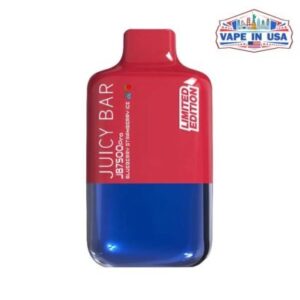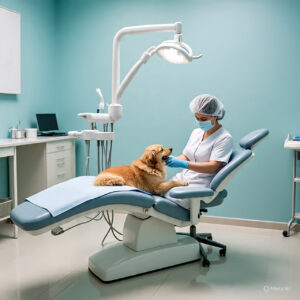Stainless laser welding is a high-precision technique that uses concentrated laser beams to fuse stainless steel components. It stands out due to its accuracy, minimal distortion, high speed, and clean finish — making it indispensable in industries like automotive, aerospace, electronics, medical devices, and food-grade manufacturing.
Unlike traditional welding, which can cause oxidation or warping, laser welding offers non-contact, pinpoint energy delivery with excellent control. This method ensures strong, clean welds with minimal post-processing, especially when working with thin stainless steel sheets.
🛠️ Key Advantages of Stainless Laser Welding
| Feature | Benefit |
|---|---|
| Non-contact process | Reduces mechanical stress and tool wear |
| High-speed operation | Boosts productivity and lowers operational cost |
| Minimal heat-affected zone | Prevents warping and discoloration |
| Excellent weld aesthetics | Reduces or eliminates need for post-weld grinding or polishing |
| Low contamination risk | Ideal for sanitary applications like medical and food processing |
| Automation-compatible | Integrates seamlessly with robotic welding systems |
💡 How Does Stainless Laser Welding Work?
Laser welding stainless steel involves the following steps:
-
Beam Generation: A fiber, CO₂, or diode laser generates a high-energy beam.
-
Beam Focusing: Lenses or fiber optics focus the beam to a precise spot.
-
Material Fusion: The laser melts the edges of the stainless steel components.
-
Cooling & Solidifying: The material cools rapidly, forming a strong weld.
There are two primary laser welding methods:
-
Conduction welding: Ideal for thin materials, with shallow penetration and smooth welds.
-
Keyhole welding: Used for thicker joints, this method penetrates deeper by creating a vapor cavity.
📊 Common Stainless Steel Grades Suitable for Laser Welding
| Stainless Steel Grade | Characteristics | Applications |
|---|---|---|
| 304 | Excellent corrosion resistance | Kitchenware, tanks, structural parts |
| 316 | Marine-grade, enhanced durability | Medical, marine equipment, food industry |
| 430 | Cost-effective ferritic grade | Appliances, automotive trim |
| 409 | Heat-resistant, used in exhaust systems | Automotive mufflers |
🤔 Why Choose Laser Welding Over TIG or MIG for Stainless Steel?
Here’s how laser welding compares to traditional methods like TIG (Tungsten Inert Gas) and MIG (Metal Inert Gas) welding:
| Feature | Laser Welding | TIG Welding | MIG Welding |
|---|---|---|---|
| Speed | Very fast | Moderate | Fast |
| Precision | Extremely high | High | Medium |
| Heat input | Low | High | High |
| Automation-friendly | Yes | Limited | Yes |
| Post-processing | Minimal | Often required | Often required |
✅ Laser welding excels in automation, repeatability, and cosmetic weld quality.
🔍 Applications of Stainless Laser Welding in Key Industries
-
Medical Devices: Clean, high-purity welds for surgical tools and implants
-
Automotive: Exhaust systems, battery enclosures, fuel injectors
-
Food Processing: Sanitary, non-porous welds that meet hygienic standards
-
Aerospace: Lightweight, precision components with reduced heat stress
-
Electronics: Micro-welding of stainless steel parts in sensors and connectors
🧠 Expert Tips for Optimizing Stainless Steel Laser Welding
-
Ensure Surface Cleanliness: Contaminants like oil or oxidation can degrade weld quality
-
Use Shielding Gas (e.g., Argon or Nitrogen): Prevents oxidation and ensures cleaner joints
-
Control Heat Input: Especially with thin materials, to avoid burn-through or warping
-
Choose the Right Wavelength: Fiber lasers (1.06 µm) are highly efficient for stainless steel
-
Monitor Beam Alignment: Even a slight deviation can compromise joint integrity
🧩 Interactive FAQs on Stainless Laser Welding
❓ Is laser welding better than traditional welding for stainless steel?
Yes. Laser welding provides faster, cleaner, and more precise welds with minimal heat distortion, making it superior for many stainless applications.
❓ Can laser welding be used on thick stainless steel?
Absolutely. Using keyhole mode, laser welders can penetrate stainless steel up to 15 mm or more depending on power and setup.
❓ What kind of laser is best for welding stainless steel?
Fiber lasers are ideal. They offer high energy efficiency, focused beams, and minimal maintenance compared to CO₂ lasers.
❓ Do I need shielding gas for stainless laser welding?
Yes, especially for high-quality finishes. Argon or nitrogen is typically used to prevent oxidation and ensure strength.
❓ What industries benefit most from stainless laser welding?
-
Medical
-
Aerospace
-
Automotive
-
Food-grade manufacturing
-
Consumer electronics







